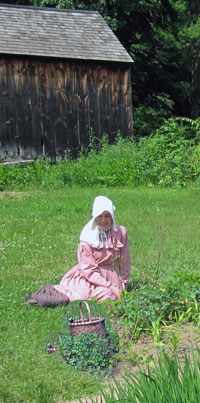Power lines, street lamps, cars, the sounds of engines--they're not on the village green at Old Sturbridge Village. If the point of OSV is to give a visitor a virtual nanosecond of another, older reality, I got it this sunny Sunday, June 23, as I turned the corner from the admission gate into the main thoroughfare.
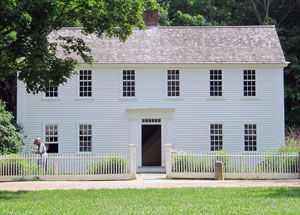 |
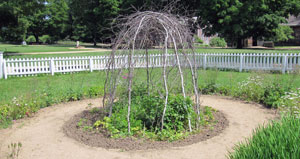 |
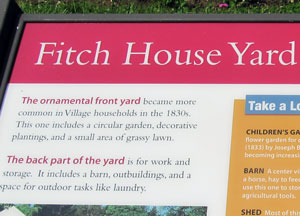 |
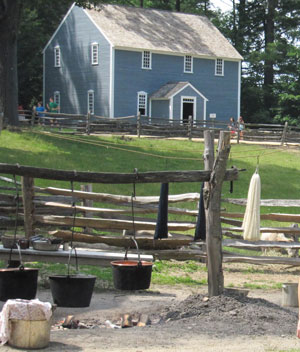 |
Imagine woodframe houses, leafy trees filtering sunlight over dusty streets, grassy edges, no concrete, horse-drawn vehicles, women in calico dresses, their faces shaded under frilly bonnets. Goats and sheep are seen and heard in the yards and around the shops and houses of worship. The village green is just that--green, but not manicured.
I am not one to glorify the good old days--but there is something to be said for a built environment where the curves of the land and the crowns of trees aren't obscured by structures or chopped by lines and angles of concrete. My companions and I agreed that the word "relaxing" came to mind. I'd add the terms "softer," "undefined" and "gently blended" as well.
The parsonage opens onto the dusty street and looks out on the village green. The white picket fence encloses the dooryard garden.
Both the picket fence and the dooryard garden had practical purposes in that day. The dooryard garden was for kitchen purposes as well as decoration. Foundation gardens, as we know them today with dense shrubs, gained popularity in the 1920s.
The picket fence was considered necessary, as domestic animals frequently roamed the streets. Meandering farm animals were a source of tension among neighbors. Many New England towns legislated picket fences at least 4.5' high, sometimes taller. Some say the picket points were popular to keep chickens from roosting on the fence.
